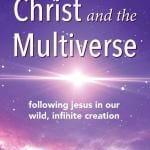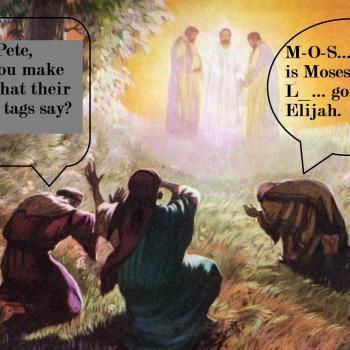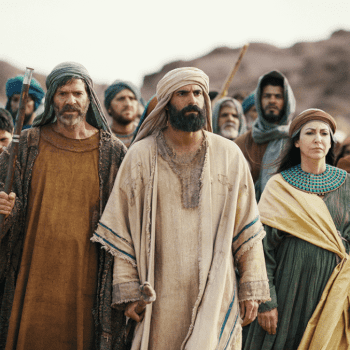A really important work in the history of music, never mind the musical reception of the Bible, is Arnold Schoenberg’s Moses und Aron. In my class on the Bible and music, it provides an opportunity for us to talk about one of the most significant shifts in the history of music, namely the serial approach to music that Schoenberg developed. That Schoenberg was Jewish but converted to Protestantism provides an opportunity to talk about antisemitism with students.
Before getting to Exodus, we might say he first backs up to Genesis for a radical new beginning. Berthold Viertel has said, “Die Jakobsleiter looks like the catechism of a new religion. Of Schoenberg’s religion.”
Both Jakobsleiter and Moses und Aron are on religious stories from Torah, reworked for the present day. Both are unfinished. Jamie James suggests that this is intentional and symbolic, hinting at the ineffability of the divine name and of full musical expression. See his The Music of the Spheres: Music, Science, and the Natural Order of the Universe (Springer 1995).
Moses und Aron spells the name of Moses’ brother that way in order to have 12 letters in the title of the work. Many suggest that Moses represents the composer himself, and Aron’s more melodic voice and willingness to lead the people in worshiping the golden calf represents the willingness to compromise ideas of pure art for popularity, or even for better motives. Yet the symbolism of the tone rows indicates the imperfection of Moses’ own grasp of the divine, and leaves the status of the two brothers more ambiguous – probably another reason the work was never completed.
Matt Page has a number of posts on his blog about Bible movies that explores the cinematic rendition of this work by Danièle Huillet and Jean-Marie Straub:
Review of Benoît Turquety‘s book Danièle Huillet, Jean-Marie Straub: “Objectivists” in Cinema which includes the Moses und Aron film.
His post about another of their movies, Cezanne, also makes comparisons with Moses und Aron. Page also looks at other movies that deserve comparison with the film version of Moses und Aron for one reason or another, such as the 1986 movie Der Tod des Empedokles and the 1992 film Antigone.
Also related to Jewish music, see this review of a new book about Irving Berlin:
Book Review: “Irving Berlin: New York Genius” — A Significant Life
And related to Moses in a Greek source:













